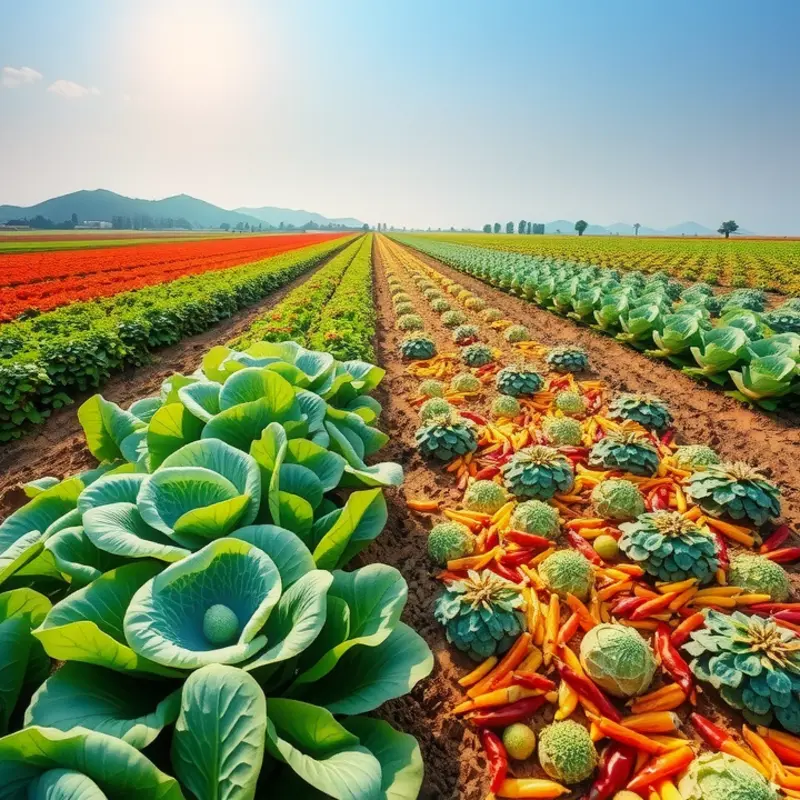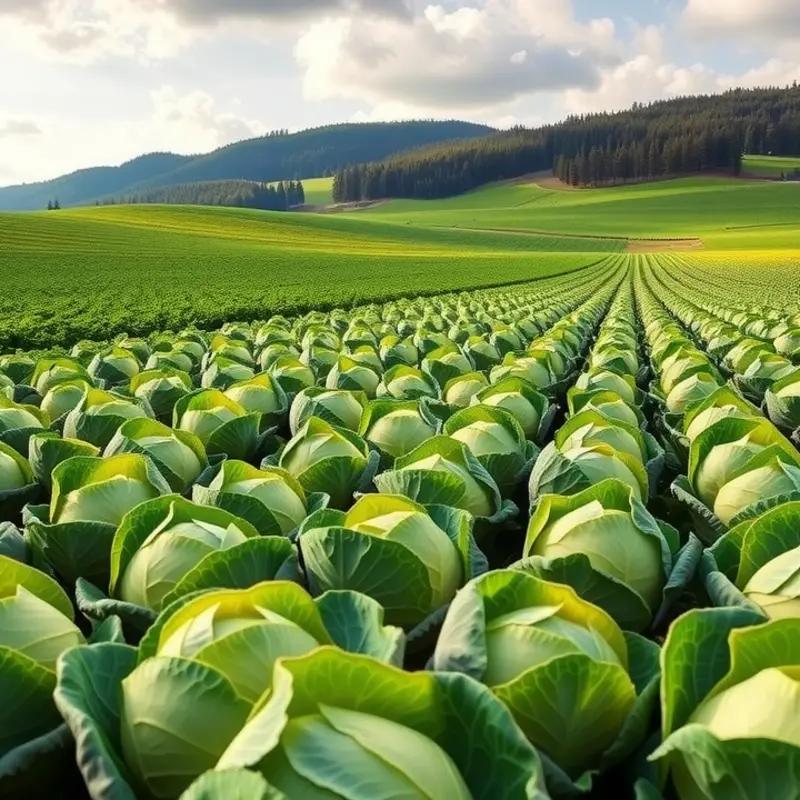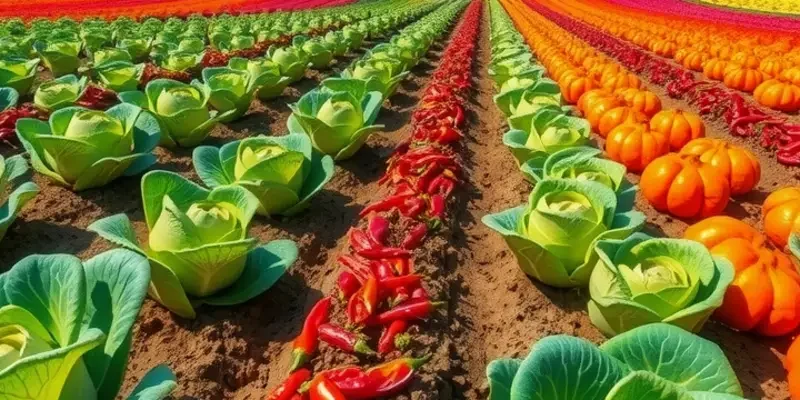From tangy German sauerkraut to sweet Korean kimchi, pickling transcends mere preservation; it embodies culture. Each region showcases its unique methods, spices, and ingredients, turning simple vegetables into vibrant statements of identity. As global food enthusiasts, embarking on this flavorful expedition reveals the stories behind these humble jars, deepening our appreciation for food heritage.
The Fermented Symphony of Korea: Kimchi

Kimchi, Korea’s iconic dish, is a culinary masterpiece rooted in history and culture. This staple of Korean dining tables represents a rich tapestry of tradition and is a symbol of Korean gastronomy. The fermentation process that brings kimchi to life has been honed over centuries, showcasing its versatility and depth.
The history of kimchi dates back to ancient times, initially as a method for preserving vegetables during long winters. Over the years, this technique evolved into a refined art form, with numerous varieties emerging. Central to any kimchi recipe is the vibrant fermenting process, which transforms simple ingredients into a complex, flavorful dish.
Commonly, baechu kimchi, made with napa cabbage, serves as the foundational version. It’s a melody of carefully selected spices and seasonings like gochugaru (Korean red pepper flakes), garlic, ginger, and jeotgal (fermented seafood). Each ingredient contributes to the distinctive taste profile, ensuring every bite is a burst of flavor and health.
Regionally, kimchi varies significantly, reflecting local ingredients and preferences. For example, in warmer regions, kimchi may be made spicier, while coastal areas might include more seafood in their variations. Oi sobagi, or stuffed cucumber kimchi, is a favorite during the summer months. Its refreshing crunch and mild spiciness make it a lighter version suitable for warmer climates.
The magic of kimchi lies in fermentation. Fermentation not only preserves the vegetables but also enhances the dish’s nutritional profile. It is a natural probiotic, promoting gut health and digestion. The bacteria involved in kimchi’s fermentation, mainly lactic acid bacteria, make it a potent superfood, celebrated for its immune-boosting capabilities.
In addition to health benefits, the fermentation process also contributes to the development of kimchi’s distinctive umami flavor. This underlying taste sensation ties into a broader culinary trend of finding alternative ways to boost flavor without reliance on salt. Those interested in exploring such techniques can find insights in this guide on flavor boosters.
Kimchi is a testament to the creativity and adaptability of Korean cuisine. It’s a reflection of a culture that values community and shared experiences, often prepared in large batches during kimjang, the communal kimchi-making event that unites families and neighborhoods. By embracing regional differences and leveraging traditional techniques, kimchi remains an enduring favorite in Korean households and beyond. This beloved dish not only satiates the appetite but also tells a story of heritage, innovation, and community.
German Roots: The Art of Sauerkraut

Sauerkraut, with its tangy and crunchy profile, holds a venerable place in German culinary tradition. This fermented cabbage dish is much more than a mere side; it is an emblem of history, culture, and health. The traditional sauerkraut-making process revolves around simple ingredients: shredded cabbage and salt. This simplicity belies the complex outcomes of flavors and probiotic-rich benefits that give sauerkraut its revered status.
The art of crafting sauerkraut in Germany relies on fermentation, a method honed over centuries. Thinly shredded cabbage and salt are all that’s required. When combined, the salt draws out moisture from the cabbage, creating a brine where lactic acid bacteria thrive. This natural fermentation process both preserves the cabbage and enhances its flavor, transforming it into the sharp, tangy dish adored by generations.
Germany’s climate plays a significant role in sauerkraut’s distinctive taste. Cool and consistent temperatures are ideal for fermentation, allowing the cabbage to ferment slowly over weeks. This measured approach ensures a depth of flavor, unveiling a balance between sourness and sweetness, unrivaled by quick-pickling methods.
Germany’s diverse regions bring unique twists to this traditional recipe. In Bavaria, for example, you encounter sweet Bavarian kraut. This variation involves adding juniper berries, caraway seeds, or even a touch of white wine, infusing each bite with a nuanced, aromatic essence. These ingredients accentuate the natural sweetness of cabbage, offering a gentler, more refined taste that complements hearty Bavarian meats and sausages beautifully.
The health benefits of sauerkraut make it more than just a culinary delight. Rich in probiotics, sauerkraut supports healthy digestion and boosts immunity. It’s also low in calories while offering a delectable way to incorporate vegetables into meals. The role of probiotics in gut health is well-documented, as explored in this guide on non-dairy probiotics, further underscoring sauerkraut’s nutritional value.
Deeply intertwined with cultural identity, sauerkraut accompanies numerous traditional dishes. It’s a staple at gatherings and celebrations, symbolizing fortune and health for the new year. As each region infuses its essence into this iconic dish, sauerkraut remains a unifying symbol of German gastronomy.
In sum, sauerkraut is a testament to the artistry of food preservation, where basic ingredients come together to create a dish of profound complexity and character. Its enduring popularity in Germany and beyond showcases the timeless appeal of fermented foods, demonstrating how traditional methods continue to shape culinary experiences globally.
Final words
Exploring the world of pickling techniques unveils a rich tapestry of cultural expressions, where every bite tells a story. From Korea’s quintessential kimchi to Germany’s beloved sauerkraut, these culinary traditions remind us of the importance of preserving not just food, but the stories, flavors, and identities behind them. As you embark on your own pickling journey, remember that every jar captures a moment in time, a taste of heritage, and a celebration of global unity through food.








